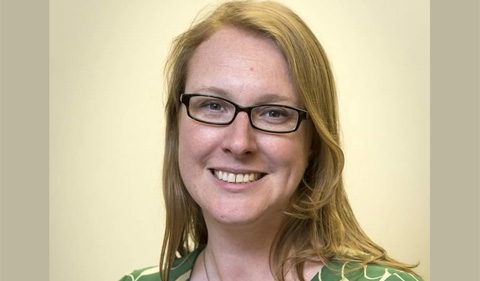Ohio University’s Chemistry & Biochemistry Colloquium Series presents Dr. Katherine Willets on “Plasmon-driven photoelectrochemistry: hot electrons, hot holes, and hot metal”, Monday, Sep. 09, at 4:10 p.m. in Walter Hall 145.
Willets is an Associate Professor in the Department of Chemistry at Temple University.
The host is Dr. Jixin Chen.
Abstract: Plasmonic nanostructures have long been appreciated for their ability to harvest photon energy and transform it into other forms, including chemical energy (through the production of hot charge carriers) and thermal energy. Hot carrier production has enabled a variety of photoelectrochemical reactions at plasmonic nanoparticle electrodes, driven by either hot electrons or hot holes. However, at the same time, thermal energy increases mass transport of reactants to the surface and can shift the standard potential of electrochemical reactions, further impacting the rate of photoelectrochemical reactions. Decoupling the relative contributions of plasmon-mediated local heating from hot carrier effects on these reactions has long been an experimental challenge, because we do not have the ability to control each plasmon decay pathway independently. Moreover, plasmon-generated hot carriers quickly lose their energy due to collisions, generating a distribution of hot carrier energies with varying oxidizing or reducing power. This talk will describe our work to isolate local heating effects from hot carrier effects as well as provide quantitative values for hot carrier energies using scanning electrochemical microscopy (SECM) on gold nanoparticles at semiconductor interfaces. We generate real temperature values as well as effective hot carrier temperatures, allowing us to understand how plasmon excitation promotes reactions on plasmon substrates.




















Comments